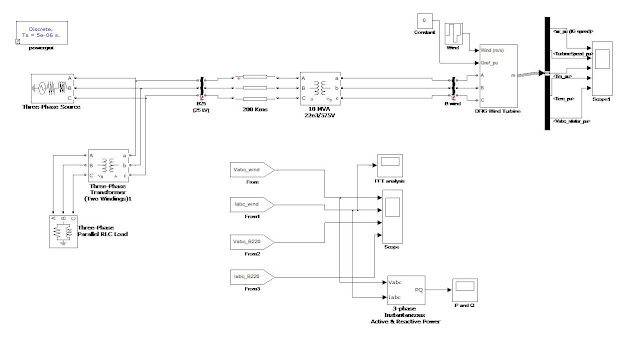Abstract--
This paper deals with power extraction
maximization and grid fault-tolerance of a doubly-fed induction generator-based wind turbine. These variable speed systems have several advantages over the traditional wind turbine operating methods, such as the reduction of the mechanical stress and an increase in the energy capture. To fully exploit this latest advantage, many efforts have been made to develop maximum power point tracking control schemes. In this context, this paper proposes a second-order sliding mode control. This control strategy presents attractive features such as chattering-free behavior (no extra mechanical stress), finite reaching time, and robustness with respect to external disturbances (grid) and unmodeled dynamics (generator and turbine). It seems also well adapted for grid disturbance tolerance.
Simulations using the wind turbine simulator FAST and experiments on a 7.5-kW real-time simulator are carried out for the validation of the proposed high-order sliding mode control approach.
This paper deals with power extraction
maximization and grid fault-tolerance of a doubly-fed induction generator-based wind turbine. These variable speed systems have several advantages over the traditional wind turbine operating methods, such as the reduction of the mechanical stress and an increase in the energy capture. To fully exploit this latest advantage, many efforts have been made to develop maximum power point tracking control schemes. In this context, this paper proposes a second-order sliding mode control. This control strategy presents attractive features such as chattering-free behavior (no extra mechanical stress), finite reaching time, and robustness with respect to external disturbances (grid) and unmodeled dynamics (generator and turbine). It seems also well adapted for grid disturbance tolerance.
Simulations using the wind turbine simulator FAST and experiments on a 7.5-kW real-time simulator are carried out for the validation of the proposed high-order sliding mode control approach.














No comments:
Post a Comment